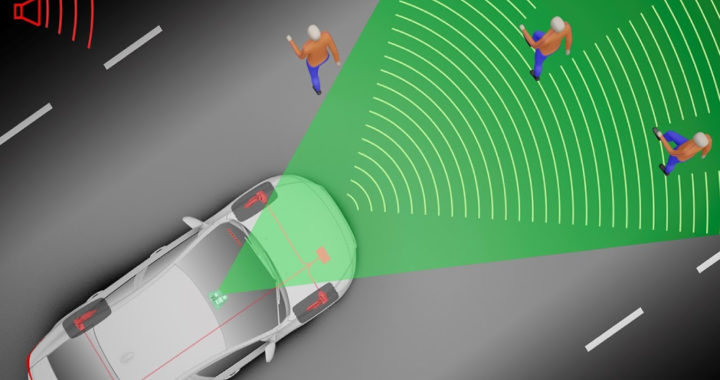IIHS to Begin Testing Pedestrian-Detection and Automated-Emergency-Braking Systems. The Insurance Institute for Highway Safety will add the tests to its roster of vehicle-safety evaluations.
More and more new cars are offered with automated braking. These systems scan the road ahead for a stopped vehicle or for a pedestrian stepping out into traffic and, should a driver not react, can apply the brakes automatically to avoid or mitigate a collision. The systems are proven to reduce crashes, but are some more effective than others?
The Insurance Institute for Highway Safety (IIHS) soon will attempt to answer that question. The insurance-industry-funded organization has announced that it will add tests of the systems to its roster of new-vehicle safety evaluations—currently consisting of a series of crash tests as well as ratings of head-restraint and headlight effectiveness.
Three separate tests will be conducted:
In the first, a dummy representing an adult-sized pedestrian enters the lane from the right side as the test vehicle approaches at 12 mph and again at 25 mph. The pedestrian is midway between the right side and the center of the vehicle.
In the second test, a smaller dummy representing a child-sized pedestrian enters the lane from between two parked cars (giving the systems less time to react), ending up at the center of the vehicle; again, the test is conducted twice, at speeds of 12 and 25 mph.
In the third test, an adult-sized pedestrian is in the lane, midway between the center and the right side of the car, which is traveling at 25 mph and again at 37 mph.
All tests are conducted on dry pavement in daylight. Vehicles’ systems will be scored as “Basic, Advanced, or Superior, based on their ability to avoid or mitigate a crash,” the IIHS said in a statement.
The first vehicles tested will be small SUVs: the 2018 BMW X1, Honda CR-V, Hyundai Kona, and Mazda CX-5 as well as the 2019 Chevrolet Equinox, Kia Sportage, Mitsubishi Outlander, Nissan Rogue, Subaru Forester, Toyota RAV4, and Volvo XC40.
At Car and Driver, we recently tested the effectiveness of automated emergency braking systems in mitigating or avoiding crashes with a stopped or slow-moving car. Four vehicles were tested:
a Cadillac CT6,
a Subaru Impreza,
a Tesla Model S, and
a Toyota Camry.
Of the group, the Impreza turned in the best performance overall, although it wasn’t tops in all four tests.
The IIHS expects to publish its results in late January.
Source: caranddriver.com
Did You Know:
Toyota is the largest automaker in the world, and it has built its name on reliability and comfort. The Japanese brand offers models in almost every vehicle category, from sub-compacts cars to family sedans, minivans to pickups, crossovers to body-on-frame sport utilities. The Toyota Motor Group also includes Lexus, Daihatsu, and Hino Motors.
Toyota was founded in 1937 by Kiichiro Toyoda and its headquarters are located in Toyota City, Japan. Created as a spin-off from Toyota Industries to create automobiles, Toyota was solely a Japanese operation until the early 1980s when they began building US-based plants.
Soon afterward, Toyotas – namely the Corolla and Camry sedans – became some of the best-selling cars on American roads. Introduced in 1997, the Prius is the world’s best-selling hybrid. Today, Toyota continues to refine their vehicles, making them safer and more comfortable, whilst prices have remained competitive and affordable.
More Auto News Keywords: | General Motors | AI autonomous | Auto Loans | Toyota | TRD | 86 | Corolla | Toyota | Car Sales | Prius | Gazoo Racing | Tesla | Website Design | luxury vehicle | Maserati | Alfa Romeo |


Fastidious response in return of this query with real arguments
and explaining everything on the topic of that.
I really like it Great website, stick with it!
Christ,
Thanks for your comment. visit us again.
Nice blog here! Also, your site loads up very fast!